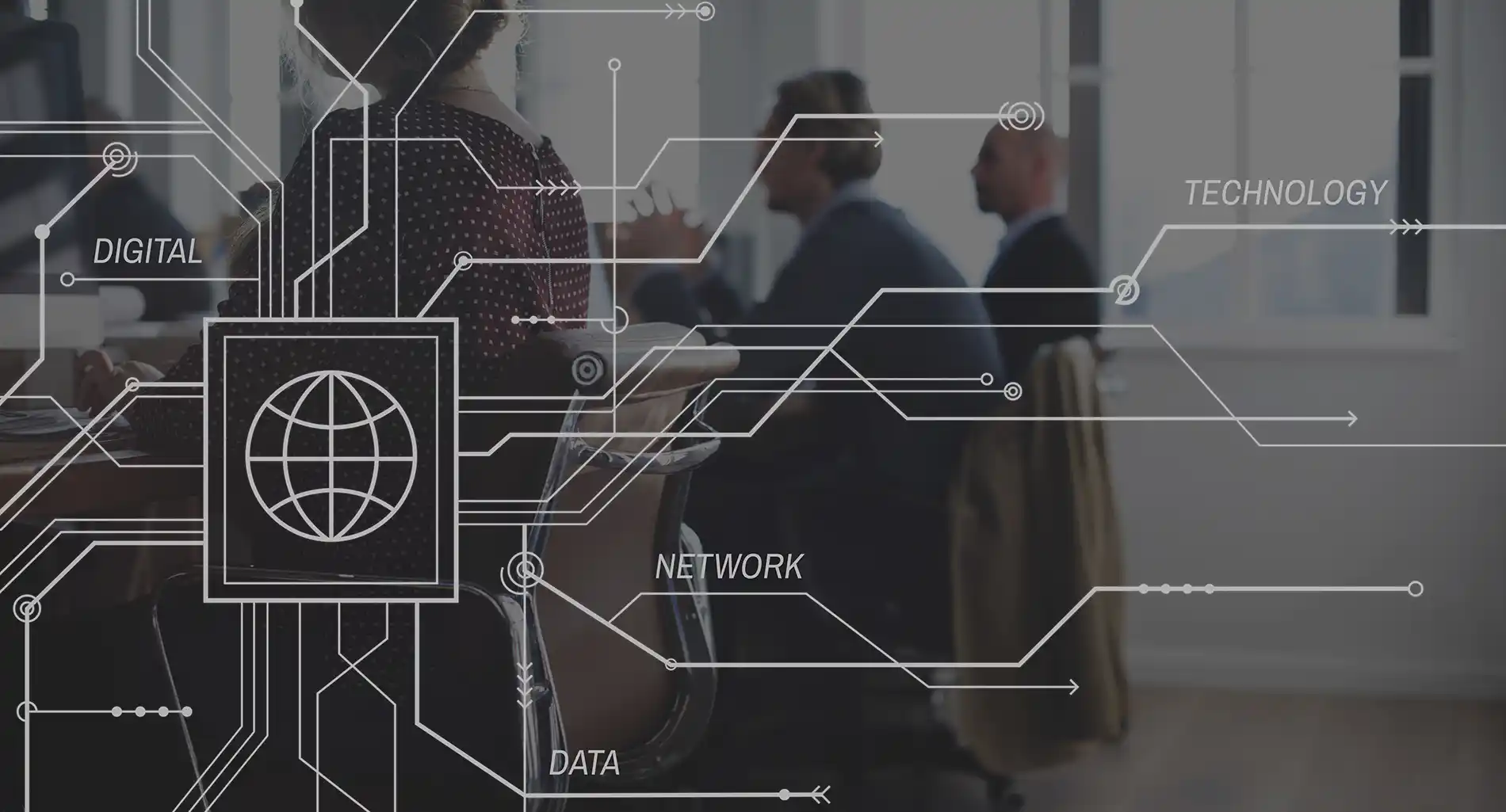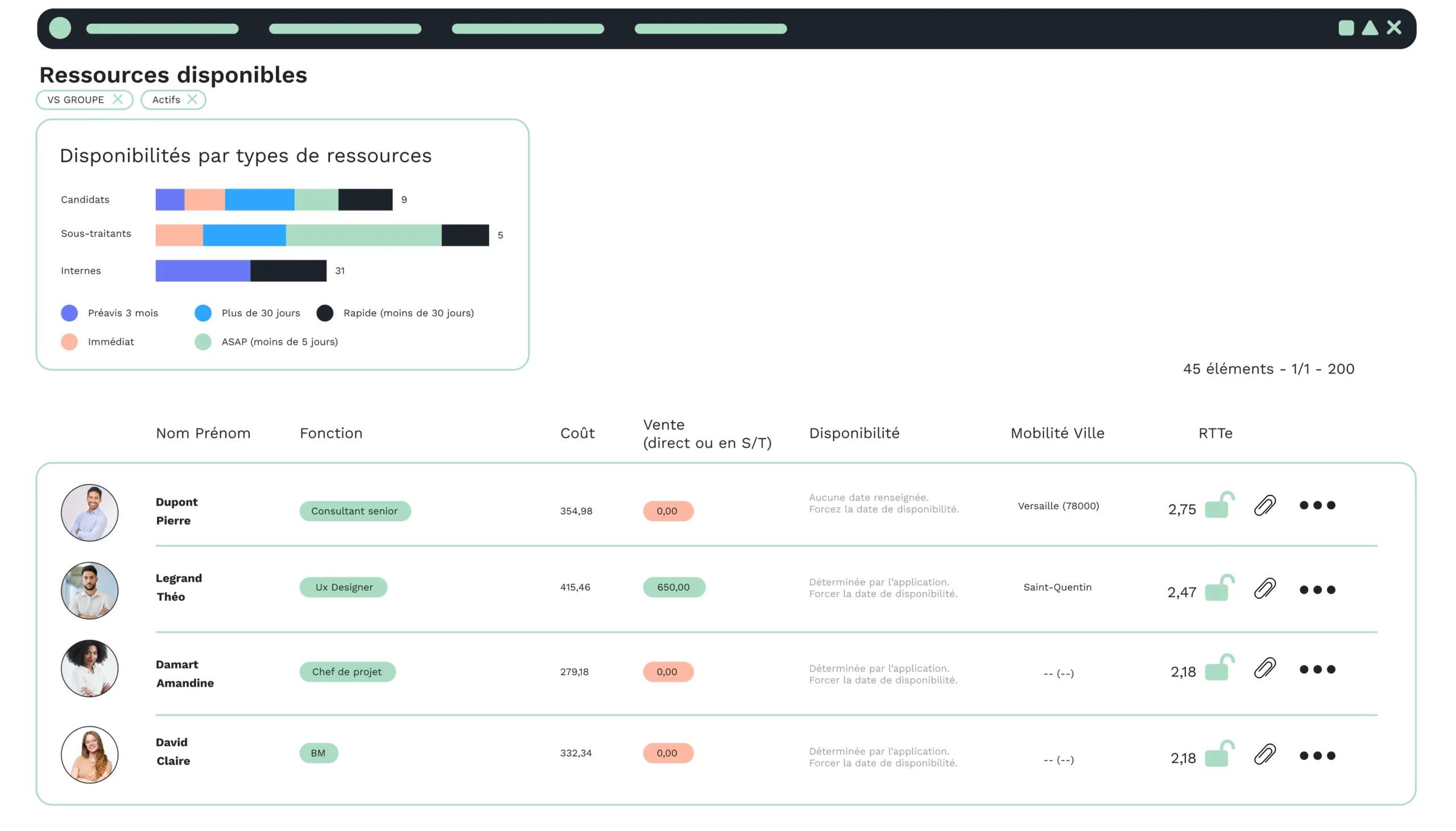Have you tried to send a document to the Administration, but it couldn’t be read? Or have you tried to send an invoice to your customer, but he can’t read the file?
This kind of incident has several consequences: it can lead to delays in the process, and therefore to sanctions by the competent bodies, or it can force you to enter the information manually in an Excel or Word file, for example, in order to send it.
But interoperability can help you avoid such situations.
In this article, we explain:
- What is interoperability in IT?
- And the challenges for companies
What does “interoperability” mean?
Definition
Interoperability defines a set of systems capable of operating and communicating together without barriers (semantic, syntactic, technical, etc.).
There are several levels of interoperability, according to EIF (European Interoperability Framework). These levels make it possible to define standards or norms on which players must agree in order to be able to exchange data without restriction.
Interoperability levels
To be able to exchange, understand and communicate, stakeholders need to use a common language. Hence the notion of interoperability. As mentioned above, there are different levels of interoperability, which determine the standardized communication norms that apply in a given context.
Political level
For this to work, stakeholders need to have a shared vision, a strategy aimed at the same goal, and so on.
Legal level
Refers to the compliance of exchanges with the legal framework (national law, confidentiality, etc.) and contractual agreements (exchange modalities, etc.).
Organizational level
Refers to the functioning of an organization through processes, skills and knowledge.
Semantic level
The term “semantics” refers to the meaning of words. Thus, interoperability at the semantic level is the agreement of stakeholders on the definition of a word.
Technical level
Within this level, we’ll distinguish two parts: the “exchange protocol” part, referring to data transmission. And the second part, “syntax”, refers to technical formats (structure, coding, etc.).
To understand interoperability in the IT context, we need to understand the notion of an information system.
What is an information system?
An information system or IS is characterized by the collection, storage, processing and communication of information relating to the management of a company, in our context. The IS makes it possible to deliver information at the right time and in the right format.
So, to return to the definition of interoperability in IT, we can define it as the ability of two or more IS to communicate without restriction.
The General Interoperability Regulation (GIR)
What are the General Interoperability Regulations?
The General Interoperability Regulation defines the rules that will promote the interoperability of government information systems. This delimitation is achieved through a set of standards.
The scope of the regulation :
- Exchanges between administrative authorities (A2A)
- Exchanges between administrative authorities and a company (A2B)
- Exchanges between administrative authorities and citizens (A2C)
(see diagram).
(source: General Interoperability Regulation )
In this way, the RGI will highlight the common standards to be implemented to ensure interoperability within the above-mentioned perimeter.
The choice of standards made by the RGI is based on several criteria, which we will describe in detail below.
The interoperability criteria of the General Rules of Interoperability
For a device to be considered interoperable, it must meet the six criteria defined by the general interoperability regulations.
Here are the criteria for an interoperable standard, according to the RGI:
- Open: the standard is considered open if it is free, complete, public, and without access or implementation constraints. What’s more, it must be royalty-free and implemented by a non-profit organization. Its evolution must be transparent, open and accessible. One last important point on this first criterion: the standard must be compatible with both open-source and proprietary software.
- Relevant: for this second criterion, the aim is to highlight the usefulness of the standard and ensure that it is recognized in the marketplace. The standard must be necessary and easy to integrate.
- Mature: the maturity of the standard must be demonstrated by its use in a real-life context and its implementation within technological infrastructures.
- Independent: no acquisition, technological or material constraints.
- Easy to deploy: implementation doesn’t have to be cumbersome or costly.
- Supported by the industry : the standard must have a solid reputation in its field.
It is on the basis of these six criteria that the General Interoperability Regulation will determine the common language to be adopted in order to be able to exchange with administrations and other companies.
Where do interoperability standards come from?
It should be noted that it is not the RGI that creates the standards; these come from international standardization bodies whose reputation is well established, as well as from public bodies.
Here is a summary of the organizations in question:
| Code | Name |
| AFNOR | French Standards Agency |
| AFS | Swiss Federal Archives |
| BnF | French National Library |
| CEN | European Committee for Standardization |
| DSS | Social Security Department |
| DISIC | Interministerial Department for Information and Communication Systems |
| ECMA | European association for standardizing information and communication systems |
| ETSI | European Telecommunications Standards Institute |
| IEEE | Institute of Electrical and Electronics Engineers |
| IETF | The Internet Engineering Task Force |
| ISO | International Organization for Standardization |
| OASIS | Organization for the Advancement of Structured Information Standards |
| OGC | Open Geospatial Consortium |
| OIF | OpenID Foundation |
| SIAF | Service Interministériel des Archive s de France |
| ITU | International Telecommunication Union |
| W3C | World Wide Web Consortium |
| Xiph | Non-profit association for the development of free software and protocols |
(source: General Interoperability Regulation )
It is through a series of consultations with organizations that the RGI can propose standards that will guarantee interoperability.
Let’s take a look at the selected standards.
What norms or standards are defined as “interoperable”?
The tables below list the standards defined by the RGI as interoperable.
Technical standards
| Level | Category | Subcategory | Standards |
| Technical | Network | IPv6, IPSec | |
| Technical | Transport | TCP, UDP, NTP, RTP, SRTP, RTCP, TLS (SSL) | |
| Technical | Session | SSH | |
| Technical | Application | Transfer | HTTP, HTTPS, CORS, FTP, SFTP, R66, AMQP, AS2 |
| Technical | Application | Operation | DNS, DNSSEC |
| Technical | Application | Access | LDAP, LDAPS |
| Technical | Application | Multimedia | RTSP, H.323, SIP, MGCP |
| Technical | Application | Messaging | SMTP,SMTPS, S/MIME, POP3, POP3S, IMAP4, IMAP4S, XMPP, XMPPS, WebRTC |
| Technical | Service | Identity & authentication | OpenPGP, SAMLv2.0, Oauth 2.0, Open ID connect |
| Technical | Service | Service web | SOAPv1.2, WSDL, UDDI, MTOM, XOP, WS-Security, WS-Addressing, InterOPS |
| Technical | Service | Service orchestration | WS-BPEL, WS-CDL |
| Technical | Service | Geospatial | WMSWFS, TJS, WMTS, CSW, WCS, WPS, |
(source: General Interoperability Regulation )
Syntax standards
| Level | Category | Subcategory | Standards |
| Syntax | Encoding | Character | UTF-8 |
| Syntax | Encoding | Compression | Bzip2, gzip, ZIP, 7z, TAR |
| Syntax | Document | ODF, OOXML, DocBook, PDF, PDF/A, EPUB3 | |
| Syntax | Web | HTML, CSS, Internet media type, ATOM, APP, Javascript, CMIS | |
| Syntax | Data structuring | XML, EXI XSD, JSON, OData, LDIF, RDF, OWL2, SPARQL, KML, DOM, SIARD, XMI, OAIS, SEDA | |
| Syntax | Data structuring | api description | YAML, RAML |
| Syntax | Data structuring | Identifier | URI, ARK, ISNI |
| Syntax | Data structuring | Geospatial | Shapefile, GeoJSON, GeoSpatial-Metadata, GML |
| Syntax | Data structuring | Address book | vCard |
| Syntax | Data structuring | Calendar | iCalendar |
| Syntax | Structured data processing | XSLT, XPath, XLink, XQuery, XInclude, XPointer, XML Signature | |
| Syntax | Structured data processing | Geospatial | OpenLS, OWS Context, SLD |
| Syntax | Multimedia | Video container | MPEG-TS, MP4, MKV, WebM |
| Syntax | Multimedia | Video codec | VP8, VP9, H.264, H.265 |
| Syntax | Multimedia | Audio container | OGG |
| Syntax | Multimedia | Audio codec | Opus, MP3, Vorbis, AAC, FLAC |
| Syntax | Multimedia | Image | GeoTIFF, PNG, JPEG, SVG |
| Syntax | Signature | PAdES, XAdES, CAdES, ASIC | |
| Syntax | Security messaging | IDMEF, IODEF |
(source: General Interoperability Regulation )
The challenges of interoperability for businesses
Background
In administrative management, companies have to deal with other organizations (companies, administrative authorities).
To optimize their human and financial resources, companies are increasingly opting for management solutions such as ERP, HRIS and payroll.
These tools provide reliable data for company management, as well as a single database.
Thus, it is through the data integrated within the management software information system that companies exchange with the players in their environment (customers, service providers, authorities): invoices, sales proposals, payroll, DPAE, etc.
As a result, data transmitted from one IS to another must be readable by software other than the sender.
It is in this context that interoperability is essential, as it guarantees communication between two software programs.
The different challenges of interoperability for businesses
The financial implications of interoperability
With recognized norms and standards, software publishers don’t need to make specific developments for each software language. This generates costs and has a major impact on software prices.
Freedom” at stake
Interoperability allows each player to be free to choose their own IT solution, while guaranteeing fluid exchanges between software.
As a result, each company is free to choose the management software that suits its needs, and continue to be able to transmit information to its various entities (suppliers, customers, administration).
The challenge of coherent information
A single piece of software can’t handle all a company’s needs. As a result, the latter use other software to complete the picture.
For example, HRIS and payroll software.
To work together, the two software packages must be interoperable, and therefore have the same protocol, so that data can be enriched and transferred from one information system to another in a consistent way.
Time is of the essence
With interoperable software, the user doesn’t have to perform the task a second time.
Take Tradeshift, for example! You’re probably familiar with this name, as some of your customers use it to manage their supplier invoices. In this case, without interoperability between your ERP and Tradeshift, you have to enter your customer’s invoice manually, which is ironic when you have an ERP.
In addition to the time lost by not moving forward on a project with higher added value, you’re not ruling out the risk of errors.
This is where interoperability comes into play, as it enables your ERP and Tradeshift to communicate with each other.
To conclude on interoperability in IT and its challenges for businesses
Interoperability in computing is characterized by the ability of several systems to communicate with each other using a common protocol.
Based on six criteria, the RGI has defined common software standards to guarantee interoperability.
In this way, different organizations can exchange information without constraint. For example, an ERP and the URSSAF platform for a DPAE.
In their day-to-day activities, companies are required to exchange a great deal of data with other players in their environment (suppliers, customers, public authorities, etc.).
This is where the RGI comes into play, by defining language standards. These standards give companies a choice of software, and enable them to transport information with other stakeholders.
Interoperability presents real challenges for companies in terms of cost, freedom, consistency and time savings.
See also..:







